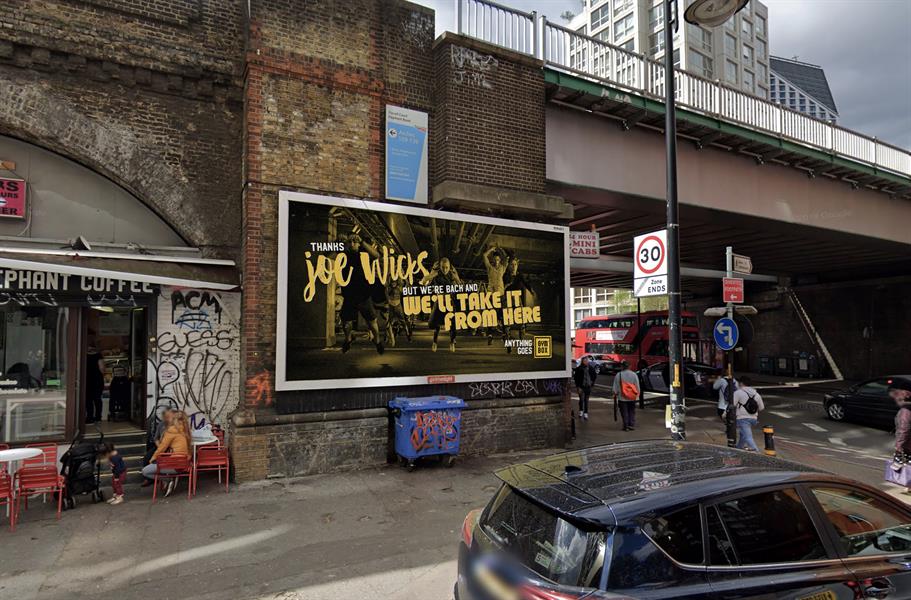
If we look at the fitness industry and specifically at gyms, we will notice a common pattern. The pattern is that most gyms promote similar if not the same message. It varies from brand to brand but most of them sound and look the same. I had a look at 100 gym brand websites and 100 social media accounts and here is what I learned: 95% of them are so similar as to be indistinguishable from each other..
Let’s take a step back and dive a bit deeper into what is the purpose of a gym. Well, the purpose of a gym should be to help an individual become healthier ,right? By individual I mean an everyday Joe or Sarah that goes to the gym. But what we see mostly on their websites and social media is fitness models. But that’s a different topic for a different day.
Every single business solves a problem – and I can’t emphasise enough that every single business out there exists because they solve a problem. What problem do we have in our society?
Well according to NHS website, here are some key facts:
- 11,117 hospital admissions directly attributed to obesity.
- 876 thousand hospital admissions where obesity was a factor – an increase of 23% on 2017/18, when there were 811 thousand admissions.
- The majority of adults were overweight or obese; 67% of men and 60% of women. This includes 26% of men and 29% of women who were obese.
- 20% of year 6 children were classified as obese.
Clearly, we have an obesity problem in this country. A big problem that needs to be tackled.
We can all agree that during lockdowns people started to view things differently. People changed their priorities and their values. In the UK, the fitness instructor Joe Wicks took the mantle of “the nation’s PE teacher” and created free, daily workout videos to help people stay fit. Wicks’ fame exploded and he released his own fitness app, The Body Coach.
More than half of British people (52%) plan to continue using digital fitness services after Covid restrictions ease, according to an April survey by OnePoll and the British Chiropractic Association.
For some, a public health crisis has also put a greater focus on the importance of fitness: in a British Heart Foundation survey, 54% of UK adults said they were determined to get more physically active as a result of the pandemic.
It’s safe to say that during the pandemic people are looking at things differently. Having said that, there are a lot of new gyms and apps that are available to people.
While restrictions were in place, a lot of people missed the community element. They wanted to go to their gym or their Pilates class, because let’s admit it, as humans we are wired to have a connection with other humans. There is a percentage of people that will keep on using the apps and there is a percentage of people that will go to their gym, and there is a percentage of people that will be trying a new type of workout (group training, functional training etc).
The pandemic opened the doors to a new audience for gyms – for people that were always intimidated to go to the gym due to bad rep that the industry has. You can’t blame them, right? If we look at all the ads and all the fitness models you would think that the fitness industry is some sort of private members club available only to a few.
Going back to most gyms’ communication. Most gyms say the same thing; join our classes, join us today, lose weight, easy-peasy workouts, the best studio, the biggest studio, the most awarded studio and so on. They all sound like a broken record.
You can see that something is not working because clearly, we can all see all their communication, yet we choose to ignore it.
The problem is that all these messages are communicating to the left-hand side of the brain – which means it’s all logic. And it sounds rational but the problem lies in that we as humans are irrational people and we make our decisions based on our emotions. We make a decision on an emotional level and we justify it with logic. I talked about this on a deeper level in my book Not Another Pair of Shoes.
That’s why all these messages don’t really work because they are all rational. If we ask people why they don’t go to the gym, most people will respond that they don’t have time, that it’s expensive, that their dog can’t be left by themselves and so on. These are all rational responses, and they are all valid. But in reality, we all have 24 hours per day, so time is not an issue, the problem is that exercising is not a priority. Another excuse is that it’s expensive. Well, we have gyms in the UK that cost £0.99 per day, and yet the same people that say they don’t have the budget will spend £100 on a night out in Mayfair. There are other issues that come into play about why some people don’t work out.
A lot of people are intimidated going to the gym as they feel they will be judged by other people who better fit the mould – you know, the macho gym dudes and super fit women.
Then we have brands like Gymshark that promote unrealistic bodies and sponsor athletes that are on steroids – which is a huge problem for obvious reasons which we will talk about another day. Recently they started to change their strategy so we will see some changes in the future.
Having looked at the problems, we can see that some brands like Nike are taking things seriously and creating campaigns that inspire ordinary people to go out and work out. They have free apps like NRC (Nike Running Club) that anybody can use to track their runs and use their inspiring guided runs – that’s what actually inspired and kept me motivated to start running four years ago.
Sports England did a phenomenal campaign called This Girl Can that people absolutely loved because they didn’t use professional athletes. Rather, they used everyday women. I believe this type of campaign can inspire more people to workout rather a campaign saying how great the product of a gym is.
There are a lot of things a gym brand can do and can talk about to make people feel ‘safe’ and overcome some stereotypes. Here’s a funny clip from the standup Michael McIntyre about gym lockers.
This is why I never use gyms’ bathrooms.
So what’s the solution? Well the answer is to start thinking about campaigns and content marketing for gyms in a different way. For example, Gym Box launched their campaign ‘Anything Goes’ to inspire different types of people to join their gym.

The best way to inspire people to sign up or try a new studio or gym is to change the way we market by creating content that inspires and helps people change their habits. Nobody talks about changing habits in the industry. This can be expanded in so many ways, from creating blog articles, a podcast episode and micro content for social media.
Yet one of the challenges we all face is changing our habits. Nobody talks about trying new things and exploring. Yet if you are a new boutique studio you want people to explore and try out new things.
Another way is to create content that will help people understand the importance of self care and that self care is not about eating pizza all day and having bubble baths every other day. Self-care actually is doing the hard things; it’s about waking up an hour earlier and going to that class, or taking your running shoes and running a 5K.
There are so many things that we can talk about – but the main theme which you might have noticed is that it’s not product centric. This is a hard pill to swallow for a lot of business owners because in our minds we think that the product is the most important thing and it’s partially true. The product needs to be great but that’s not what will grab people’s attention and get them to try you.
Understandably years ago you ran one outdoor campaign, did some flyers and a month’s radio ads so it was all about the product. But as we’ve evolved in the digital era and content marketing is such a huge part of our lives one campaign is not enough and consumer’s behaviour changes. That’s why influencers grow so much faster than a typical brand – they have a content creator mentality.
If you want to move a bit deeper on strategy, you can interview your current members about their fitness journey and your potential members to gain consumer insights. Once you have consumer insights you can create better content.
How do you think big brands like Nike, Under Armour and others create such amazing campaigns? Do their ideas come from thin air? No, they do a lot of consumer research, data, analyse and then execute. Most gym brands take a pic of their gym and post it on Instagram with a very creative caption that took a lot of time to come up with; ”Here’s what’s happening today in the gym”… dull and boring. One of the main reasons we categorize gyms and studios is because they look the same, their tone of voice is the same – there is no distinction. Have a look at innocent drinks – everything from their packaging to their social media captions are unique to them. Another great example is Lululemons’ Instagram account – all their content adds value to the end consumer.
In the end after any right workout, we all feel much more productive, we feel better about ourselves, we have more energy and so many other benefits. The workout, be it a gym, a boutique studio, or a run in the park – the product itself brings the same results just in a different form.
A gym needs to look at the bigger picture and the bigger problem that they solve. Helping people live a better, happier life. But that needs to be communicated.
Let me know your thoughts in the comments below.


